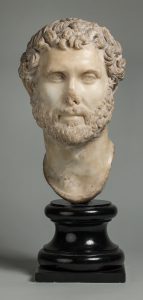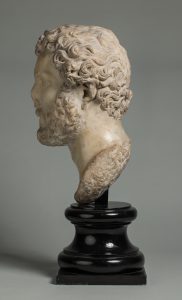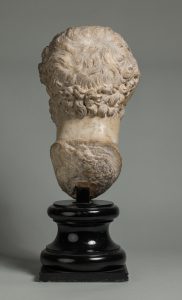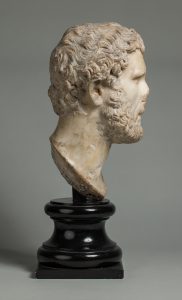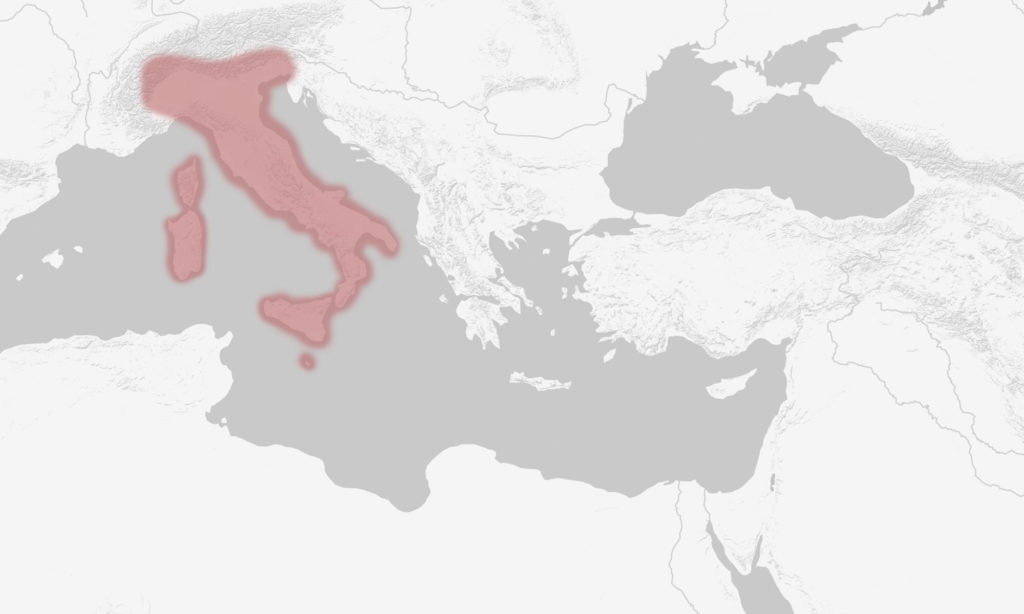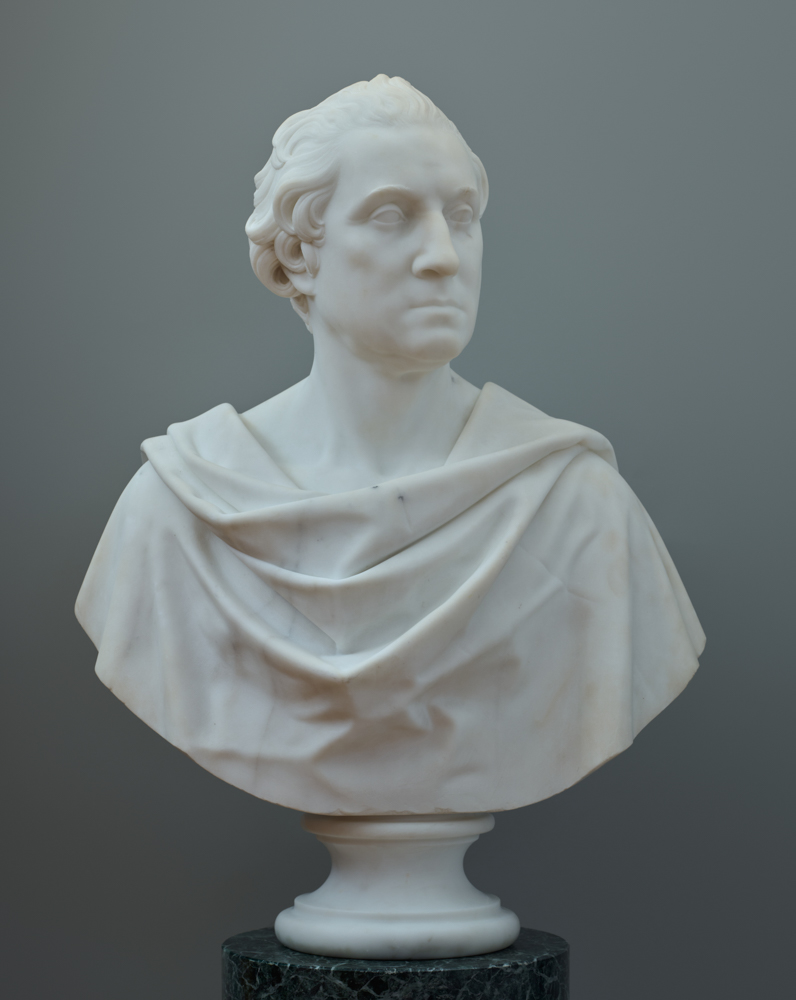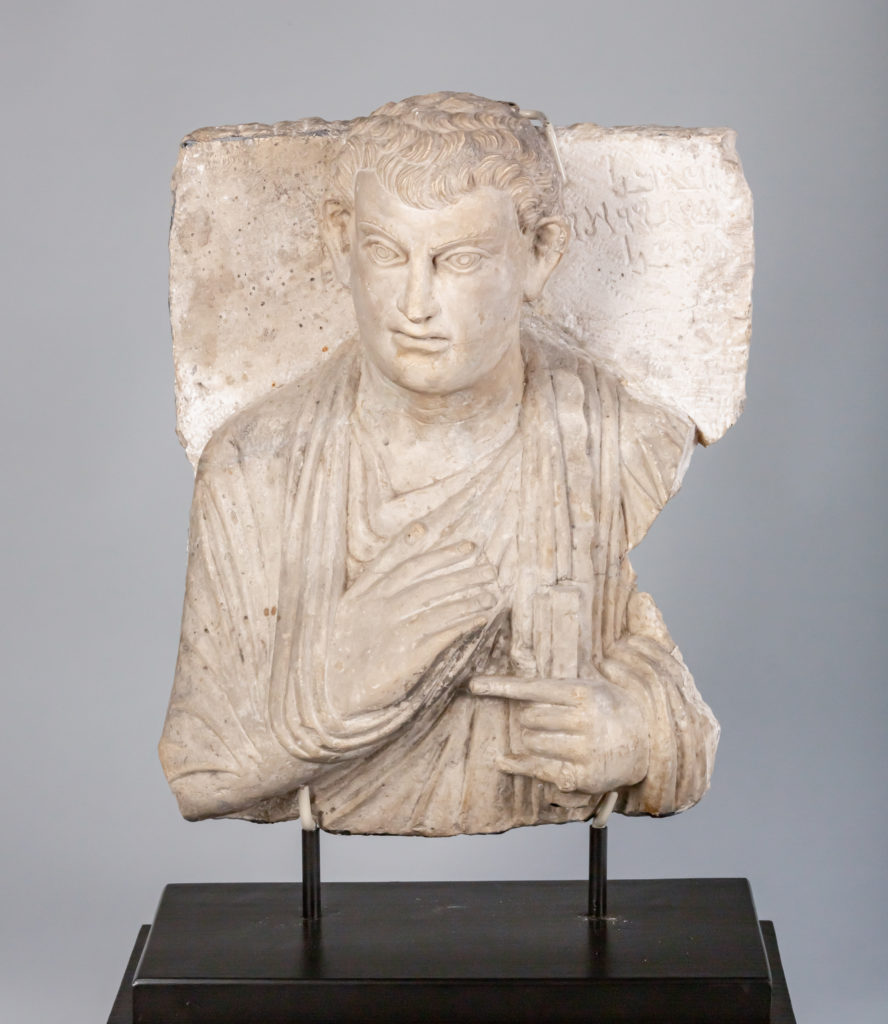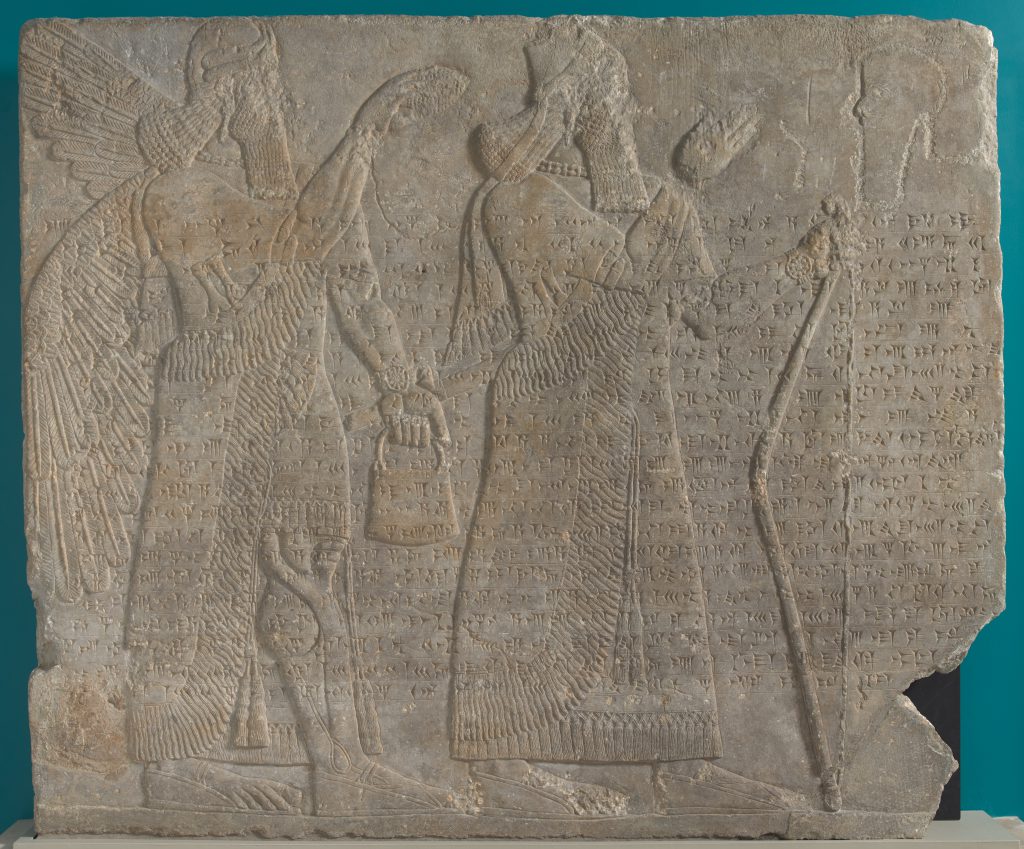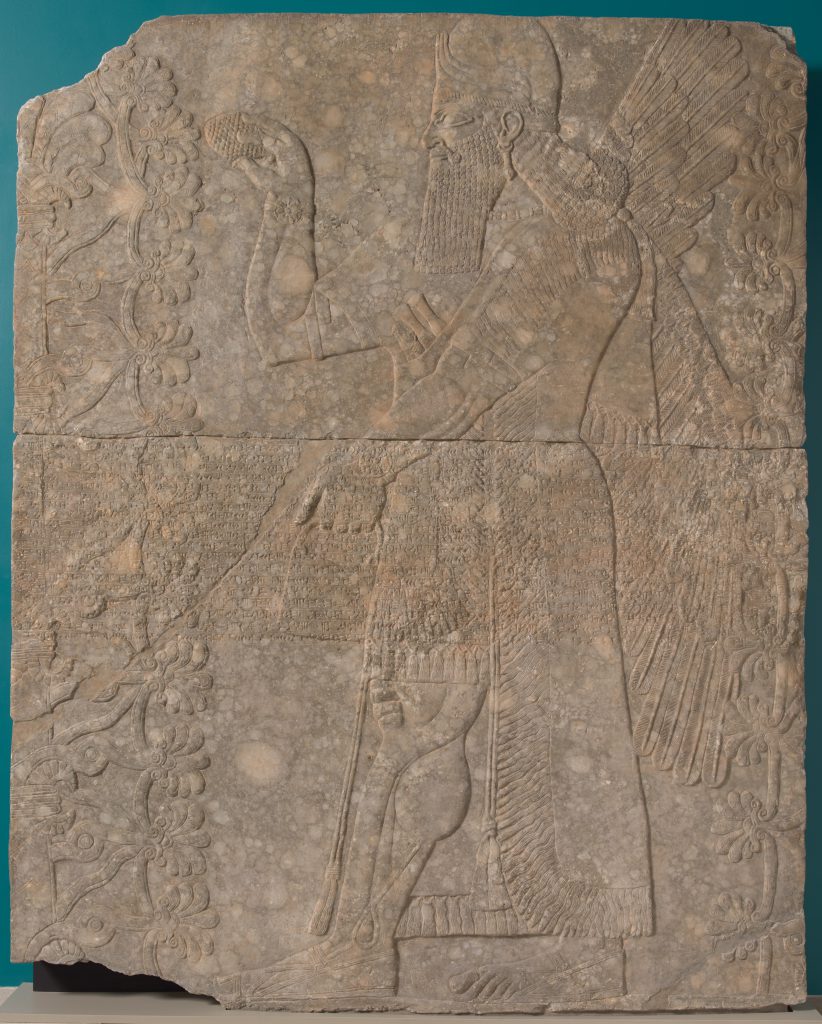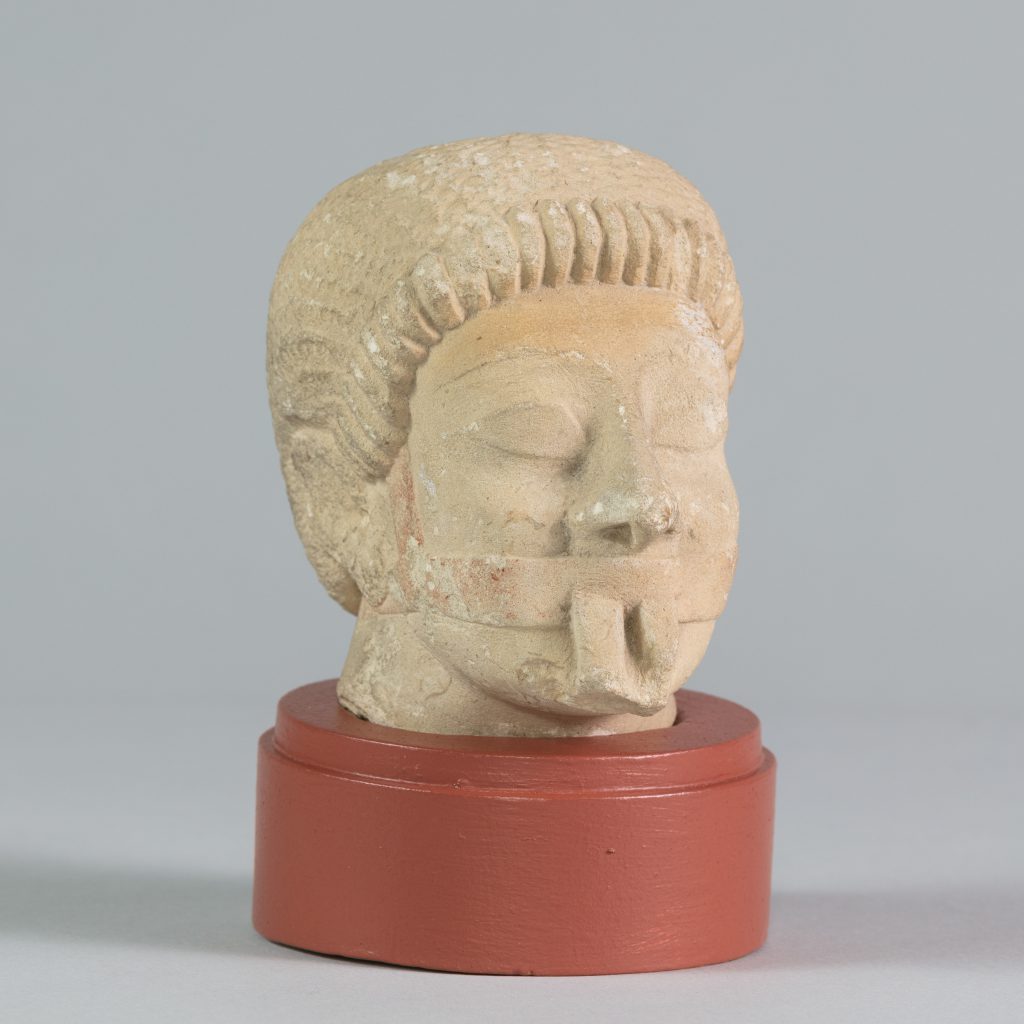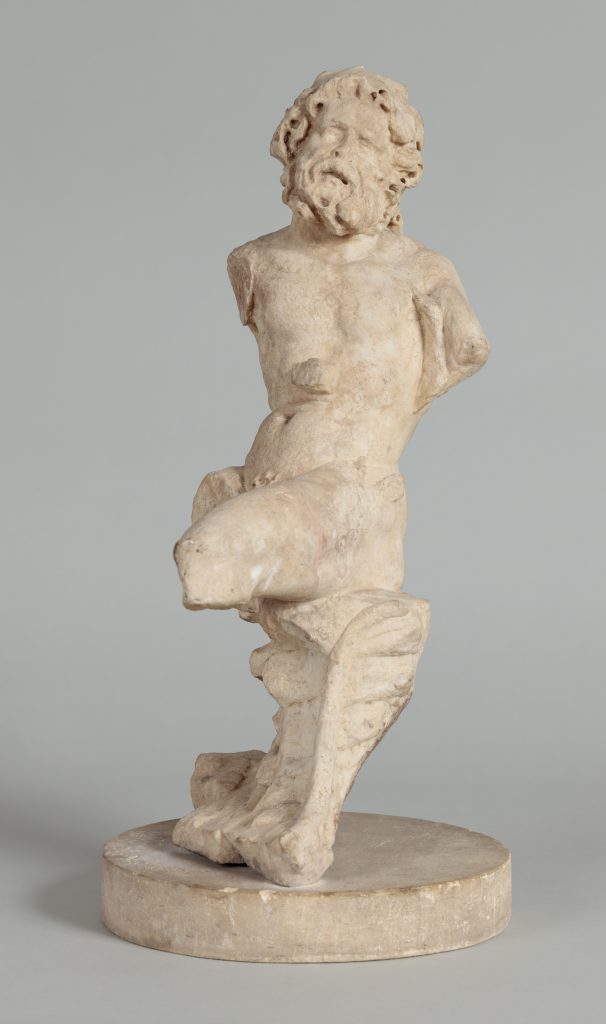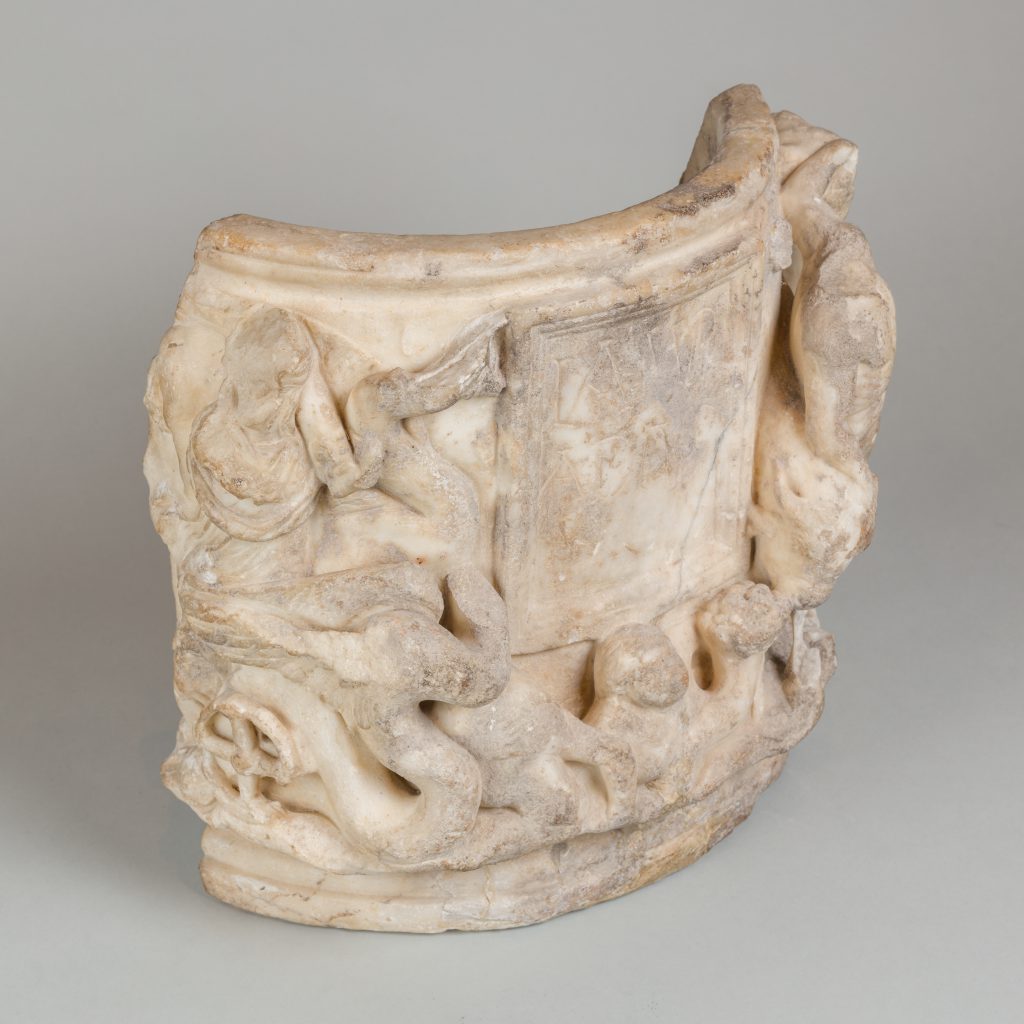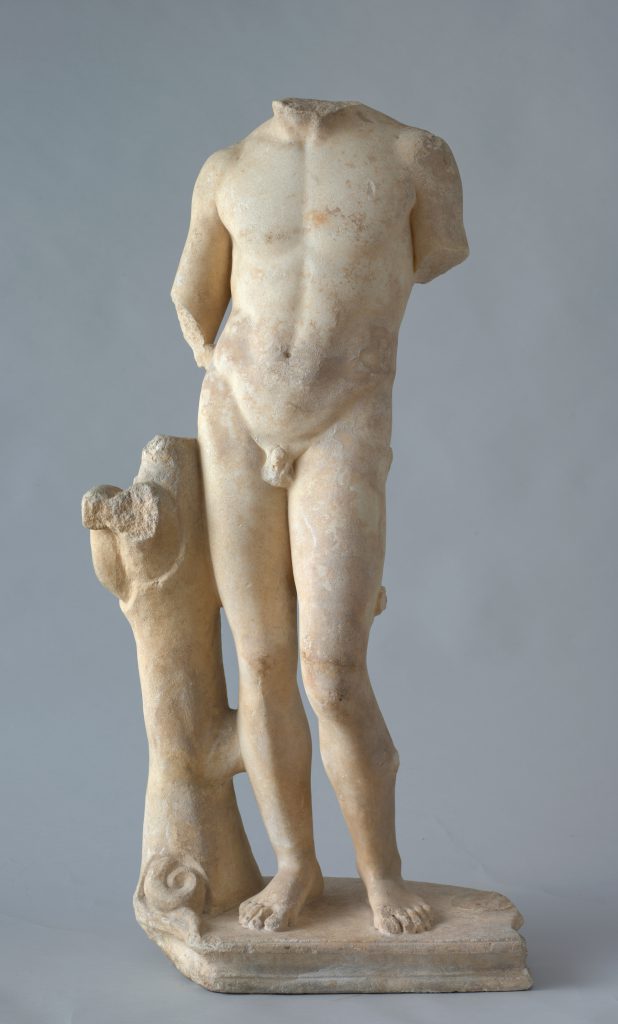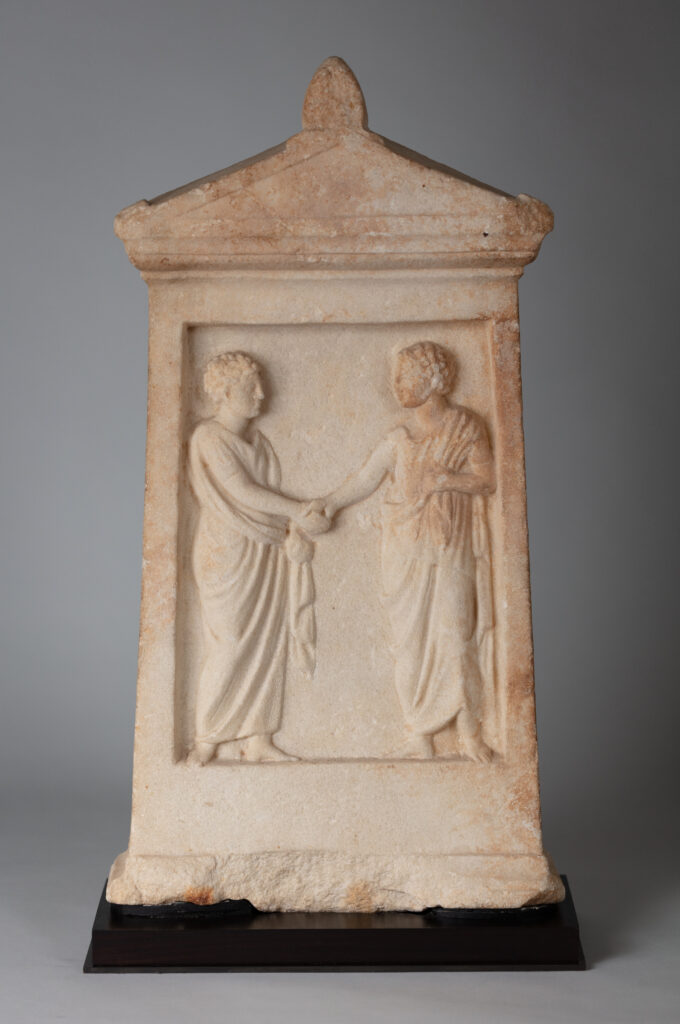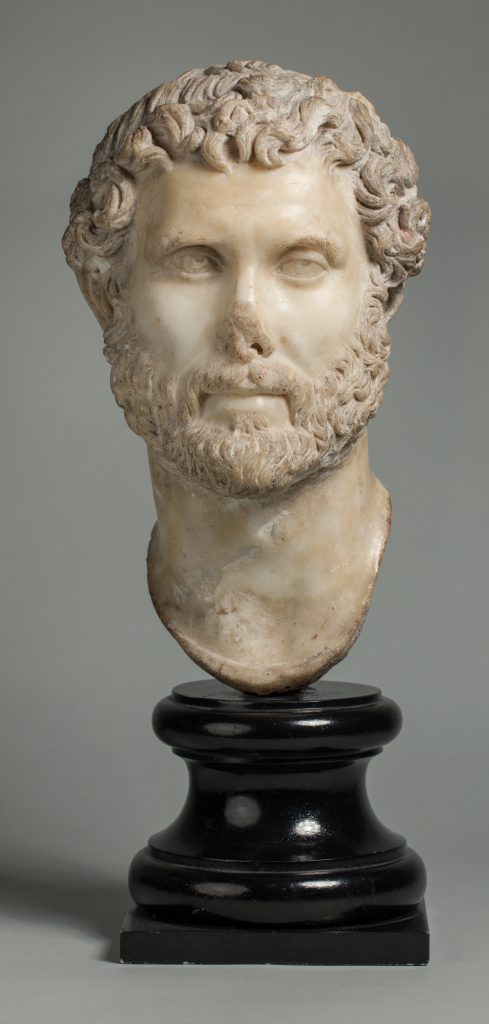


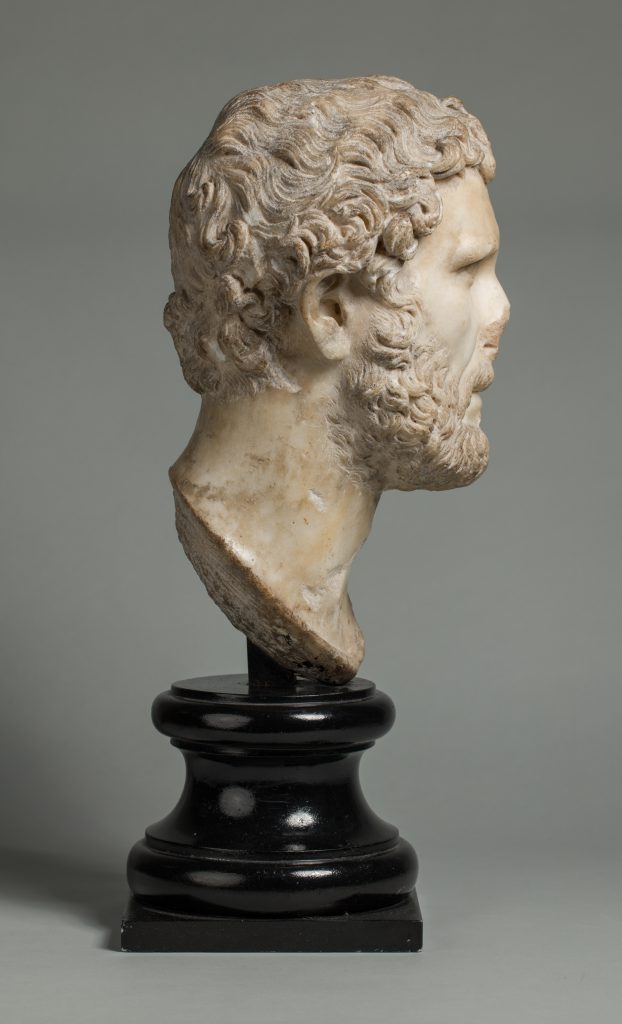
Gift of Edward Perry Warren, Esq., Honorary Degree 1926
1906.1In the tranquil expression and sympathetically carved countenance of the Roman Emperor Antoninus Pius (86–161 CE), we may detect echoes not only of the calm, composed demeanor of the emperor himself, but of the stability and peacefulness of his reign (138–161 CE), a period during which Rome experienced no revolts or uprisings. Created within the first decade of his succession to the throne in 138 CE, this example from Bowdoin’s collection is a life-sized portrait head, which shows the emperor with his face quarter-turned to the left, eyes gazing ahead and slightly upwards. The Bowdoin portrait takes full advantage of the Parian marble from which it is carved. The material was highly prized in antiquity for its fine grain, even coloring, and luminous, translucent quality.
The gentle furrows in the forehead and on either side of the nose allude subtly to the older emperor, then in his fifties, offering the impression of a mature ruler able to bear the cares of state with poise. The brows are heavy and undercut, drooping ever so slightly over the outsides of deep-set eyes. These are drilled at the ducts and feature scribed irises and half-moon pupils. The neutral set of the mouth and distant gaze further the air of tranquility and poise, lending the emperor a careworn but resolute expression.
The hair is swept forward from the crown, falling over the brow in clusters of artfully arranged curls that sit heavily at the temples and cover the tops of the ears. Deep modeling and extensive use of the drill create dramatic shadows. While the initial impression may be tousled and windswept, the careful gathering of the hair forward about the brow and temples and the arrangement of the locks reveal the hairstyle to be studiously maintained. Like the hair, the beard was also the product of careful grooming, fuller at the sides but trimmed close to the face at the chin, with a carefully clipped mustache and tuft of hair under the lower lip.
The emperor’s curly locks and beard create an essential contrast with his smooth skin and calm expression. This contrast would have been further heightened by paint, traces of which remain in the hair and beard.
Despite his relatively long reign from 138–161 BCE, only two portrait types of Antoninus Pius exist. The earlier, and much more common, is the ‘Formia’ type, from the first decade of Antoninus’s reign, of which the Bowdoin portrait is an example. Over one hundred examples of this type exist, characterized by pincer-like locks of hair at the front of the forehead, heavy curls at the temples, and a subtly furrowed brow. The Bowdoin portrait is one of roughly two dozen that take a freer approach to rendering the essential characteristics of the type, especially the curls of the hair and beard. On more precisely composed examples, such as the one of the Munich Glyptotek, the hair is even more deeply modelled and the beard is composed in places of individual ringlets. By comparison, the looser execution of the Bowdoin example lends the hair and beard a more natural look.
Although Antoninus Pius himself left Rome only twice, portraits of him—scattered throughout the Roman world on coins, mosaics, public monuments, and bronze and marble busts and statues—ensured that his image and his authority was broadly recognized. Such objects made the emperor’s face a familiar one, recognizable and omnipresent throughout an empire of over fifty million people across nearly two million square miles. The special power of portraiture to render present that which is absent was not lost on the imperial courts of Rome. Each carefully curated the image of the emperor, and the attention lavished on the hair and beards indicates that these were focal points for both distinguishing successive emperors and communicating dynastic continuity. Hadrian, who adopted Antoninus Pius as his heir, was the first emperor to adopt the beard, and male fashion (and imperial portraits) followed suit for years. Antoninus’s close cropped and carefully groomed beard hews closely to Hadrian’s, and his prominent brows and heavy eye lids also evoke images of his predecessor. These shared features suggest that much attention was paid to signaling the legitimacy of Antoninus’s succession as an adopted son and to ensuring the stability of the imperial dynasty.
While the imperial court may have been responsible for commissioning an original prototype, it was local initiative that gave rise to hundreds of copies of imperial portraits set up as busts and statues throughout the empire in public spaces—fora, theaters, and bathhouses. Generally commissioned by local councils and notables, portraits were completed by local artisans working from copies of the prototype that were circulated for this purpose. They were a means to curry favor with the emperor, to raise the profile of the city within the imperial politics, and to project connections, power, and prestige on a local scale. Imperial portraits reflect a broader culture of honorific statuary in the Roman empire.
Before 1906, collection of Edward Perry Warren; 1906, gifted to the Bowdoin College Museum of Art by Edward Perry Warren.
Collector
A testament to his impact as an influential twentieth-century American antiquities collector, Edward Perry Warren’s (1860–1928, H ’26) name is linked to hundreds of ancient objects housed in institutions across the United States, including more than five hundred works at the Bowdoin College Museum of Art alone.
